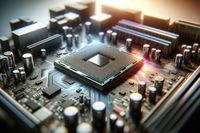The Holy Grail of Quantum Computing Is Finally Here. Or Is It?
Google and startup Quantinuum performed breakthrough experiments in quantum computing. Conflicting views of the results’ significance show the challenges of making quantum computers practical.

Conflicting Interpretations of Breakthrough Experiments
The world's biggest computing companies and startups have invested billions in quantum computing. Google and Quantinuum announced breakthrough experiments that could solve quantum hardware's reliability issues.
Both teams demonstrated a mechanism for a topological qubit, a component that can hold and manipulate information in quantum states more robustly. However, opinions on whether the component was actually created differ.
Quantinuum founder Ilyas Khan believes they have created a topological qubit, while Google researchers Trond Andersen and Yuri Lensky disagree. Disagreements like these highlight the challenges faced by the quantum computing industry.
What is a Topological Qubit?
A topological qubit is a system that encodes data into the properties of non-Abelian anyons, quirky objects that emerge from the behavior of particles confined to a flat surface.
Non-Abelian anyons retain a memory of their past movement, which can represent binary data. Their resilience to outside disturbances makes them desirable for quantum computers. Researchers have proposed creating non-Abelian anyons using various materials and systems.
While Google and Quantinuum demonstrated the creation and manipulation of non-Abelian anyons, physicists argue that the underlying systems and materials are too fragile for practical use in quantum computing.
Incremental Progress and Fundamental Questions
Physicists have not reached a consensus on whether the experiments by Google and Quantinuum have achieved topological qubits. Some argue that the experiments have not demonstrated any quantum advantage in computational power.
However, incremental progress in studying non-Abelian anyons and the underlying math is crucial in the journey towards practical topological qubits. These experiments also contribute to a deeper understanding of physics and the behavior of matter.
While the development of practical topological qubits may still be some time away, the exploration of anyons is driven by scientific curiosity and the desire to better understand the fundamental nature of matter.



